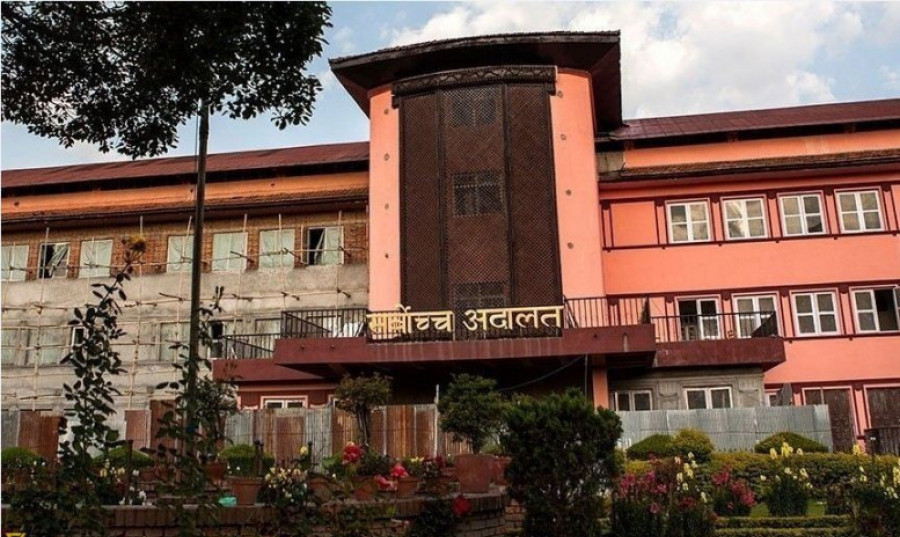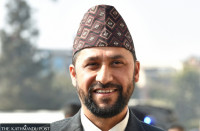National
Amicus curiae arguments so far against House dissolution
Purna Man Shakya, the fourth of the five friends of the court, says the constitution provides limited power to the prime minister with no enabling provision to dissolve the House.
Binod Ghimire
As the ongoing hearing on Prime Minister KP Sharma Oli’s House dissolution case draws to a close, yet another member representing the amicus curiae on Thursday argued that the December 20 decision to dissolve the House needs to be overturned, as the move was unconstitutional.
Senior Advocate Purna Man Shakya said that the Constitution of Nepal envisions a limited government depriving the country’s executive head of prerogative power to dissolve the House.
He said constitutional articles and provisions should be the sole basis for making any decisions when there is a written constitution.
Shakya is the fourth of the five-member amicus curiae presenting his brief on Thursday after Badri Bahadur Karki, Satish Chandra Kharel and Bijaya Kant Mainali. The fifth member is Gita Pathak Sangraula.
Shakya represents the Supreme Court Bar in the amicus curiae.
While presenting his views, Karki on Tuesday had made wavering statements, not providing any clear argument whether Oli’s House dissolution was constitutional or unconstitutional. Karki said that the dissolution was done with a mala fide intention. He, however, added that there were some ambiguities in the statute that need to be cleared up by the court.
Kharel on Wednesday, however, presented his point-blank arguments, calling the House dissolution move out and out unconstitutional. The same day, Mainali argued that the prime minister had the prerogative to dissolve the House.
Countering the arguments made by the advocates who defended Oli’s move, Shakya said international practices cannot be cited when the law of the land clearly provides for conditions for the dissolution of the lower house.
Those defending Oli’s House dissolution move had argued that prime ministers of the countries which practise parliamentary system possess inherent power to dissolve parliament.
“The Constituent Assembly, where people had their representatives, provided limited authority to the prime minister,” said Shakya. “The authority to dissolve Parliament that was endowed upon prime minister in the 1990 constitution was taken away while drafting the Constitution of Nepal 2015.”
Many of the lawyers defending Oli’s House dissolution move had cited the provisions of 1990 constitution to justify that the prime minister possesses inherent power to dissolve the House.
Article 53 (4) of the 1990 constitution authorised then king to dissolve the House on the recommendation of the prime minister.
Shakya said that the provision didn’t get continuity because the country was victimised due to the misuse of the authority given to the prime minister to dissolve the House.
At least four prime ministers had attempted to dissolve Parliament between 1994 and 2002. The Supreme Court, however, had overturned the decisions on two occasions. Then prime minister Girija Prasad Koirala’s House dissolution move in 1994 though was upheld by the court but similar attempts by then prime ministers Manmohan Adhikari and Surya Bahadur Thapa in 1995 and 1998, respectively, were overturned. Similarly, then prime minister Sher Bahadur Deuba in 2002 had dissolved Parliament, which was upheld by the Supreme Court.
But all those attempts were made under the 1990 constitution. And learning from those experiences, the drafters of the 2015 constitution had limited prime minister’s power when it came to House dissolution.
Shakya also said that the arguments by Oli and his lawyers that House dissolution is a political move do not hold water.
“This is not a political issue, but a constitutional one,” said Shakya. “The court should interpret it accordingly.”
In the letter recommending that the President dissolve the lower house, Oli has argued that he was forced to take the step after his opponents in his Nepal Communist Party made it too difficult for him to work and accomplish various tasks.
In his written justification to the Supreme Court on January 3, Oli said that House dissolution was a political move and it did not warrant a judicial review. He also claimed that he took a political decision by dissolving the House as he enjoyed the inherent power as the leader of a majoritarian government.
He had made similar claims in the National Assembly as well last month and has reiterated the statement at the party’s mass gatherings.
So far four of the five members of the amicus curiae have put forth their arguments before the Constitutional Bench.
The hearing, that started on December 23, will conclude after Sangraula, the last member of the amicus curiae, presents her brief on Friday.
According to officials at the Supreme Court, the five-member Constitutional Bench led by Cholendra Sumsher Rana will study the hearing notes from the plaintiffs and defendants and arguments from other lawyers and organisations as well as members of the amicus curiae before making the final decision.
Led by Rana, the bench includes justices Bishwombhar Prasad Shrestha, Sapana Pradhan Malla, Anil Kumar Sinha and Tejendra Bahadur KC.
“There is also a practice to have discussions among the justices before passing a judgment,” Kishor Poudel, a communication expert at the Supreme Court, told the Post. “I think the bench will seek at least a week to pass the final verdict.”




 7.12°C Kathmandu
7.12°C Kathmandu















